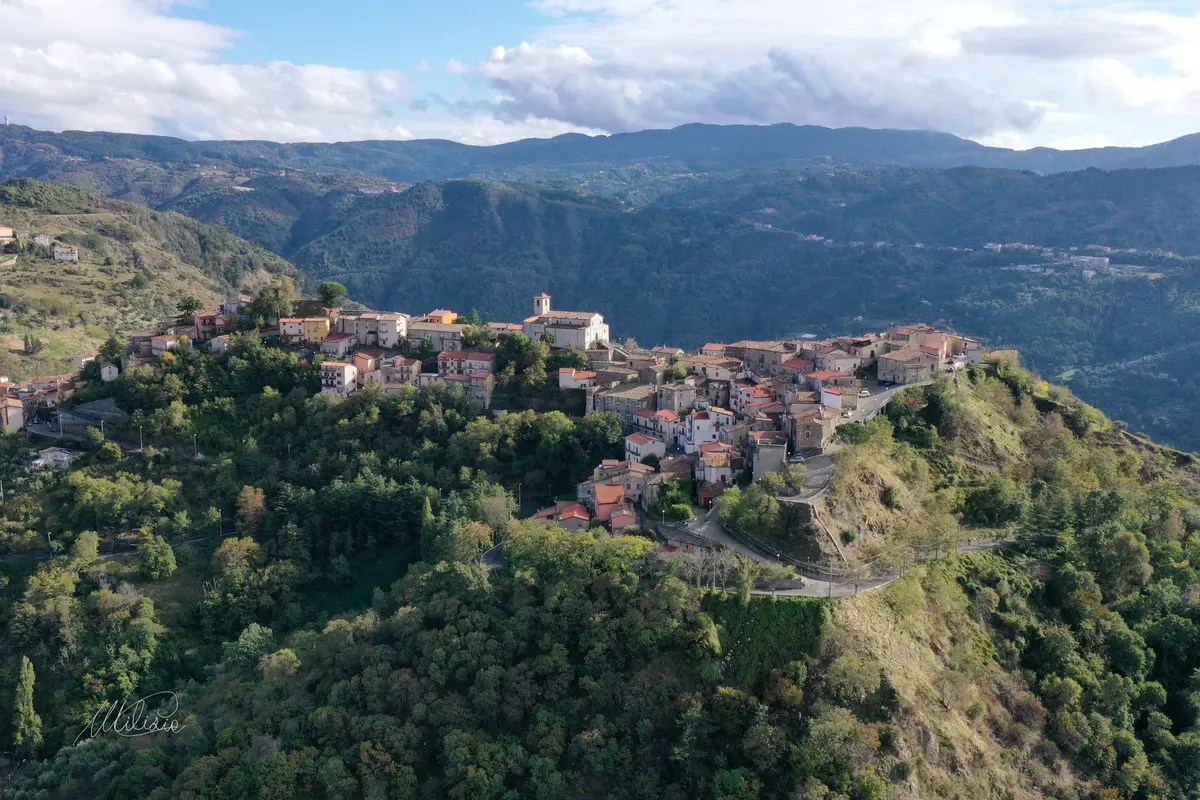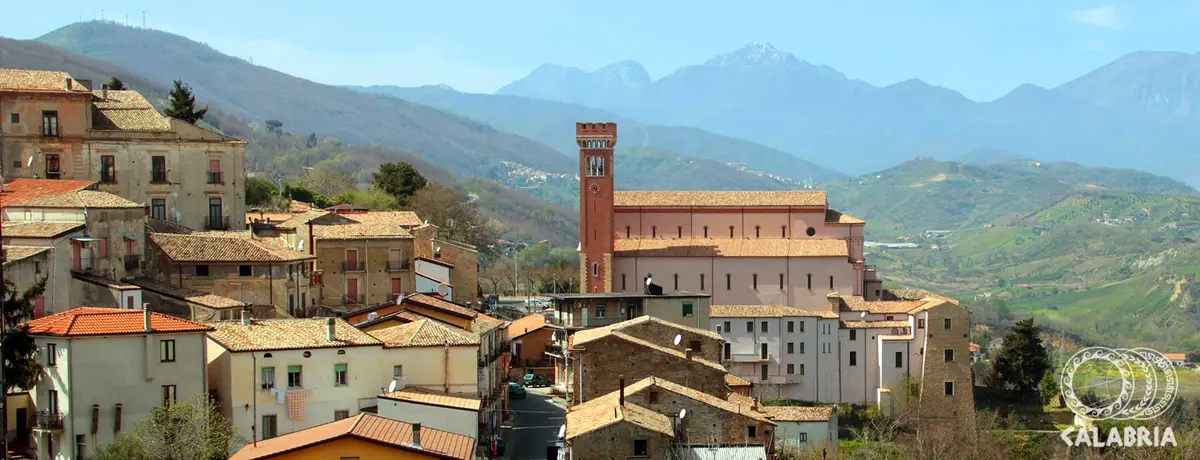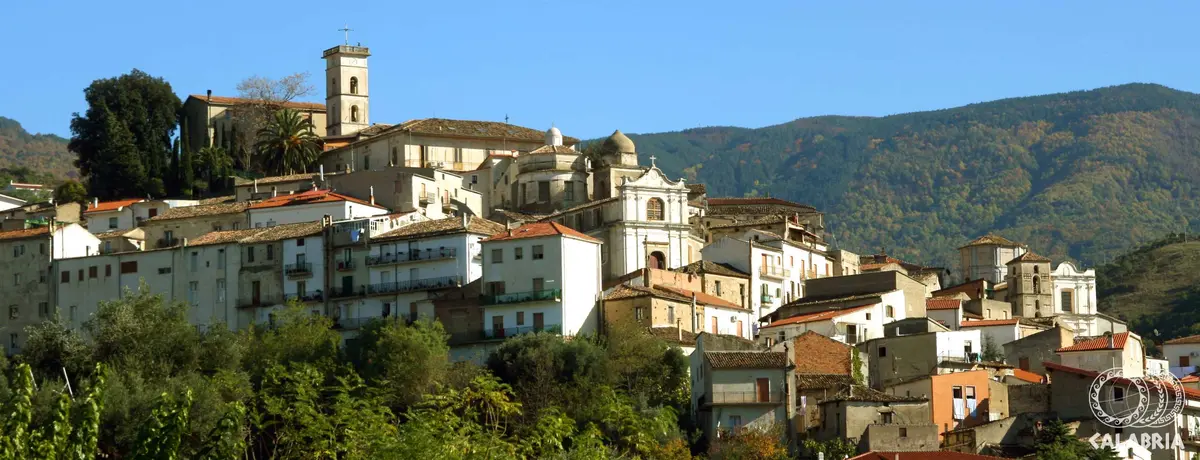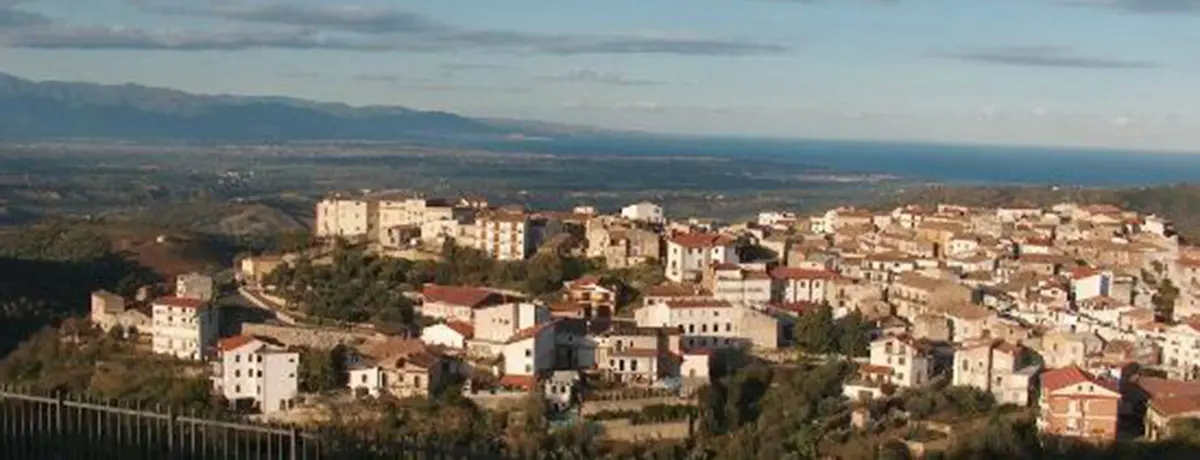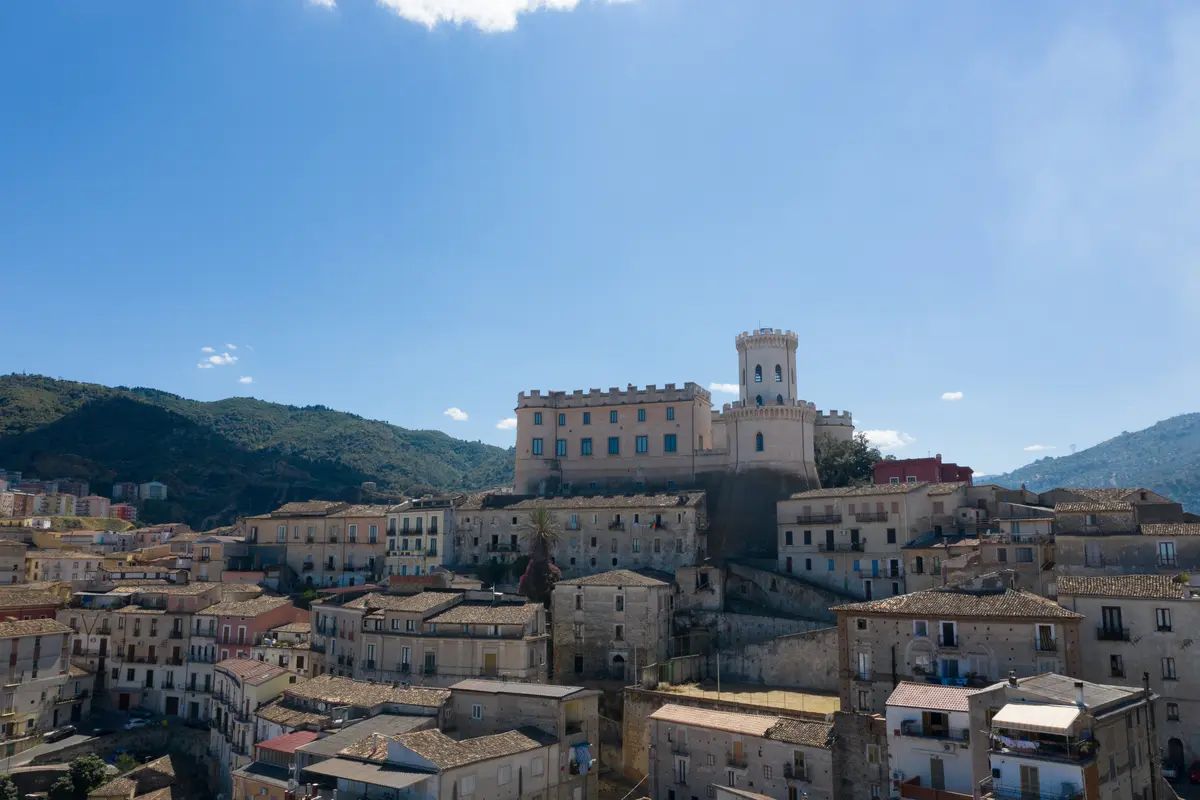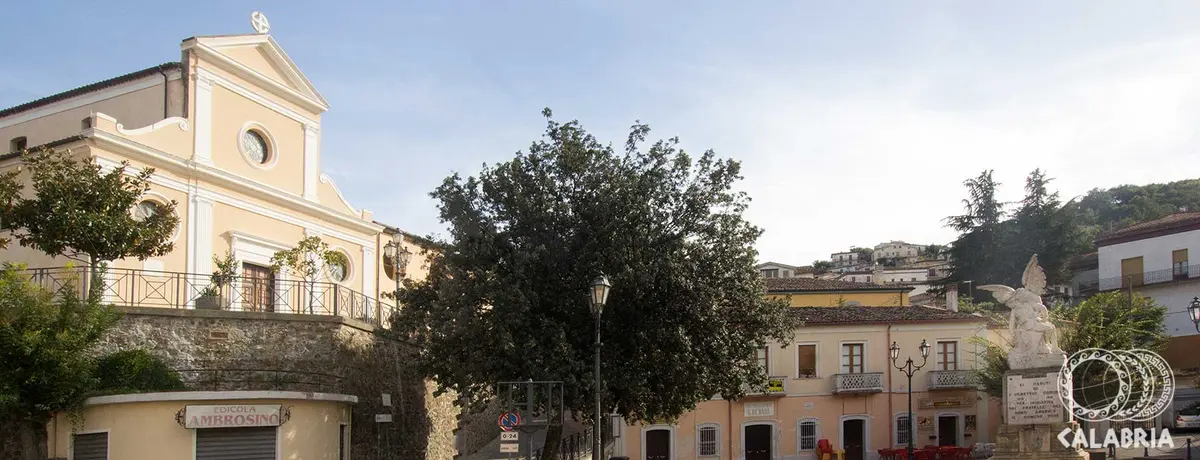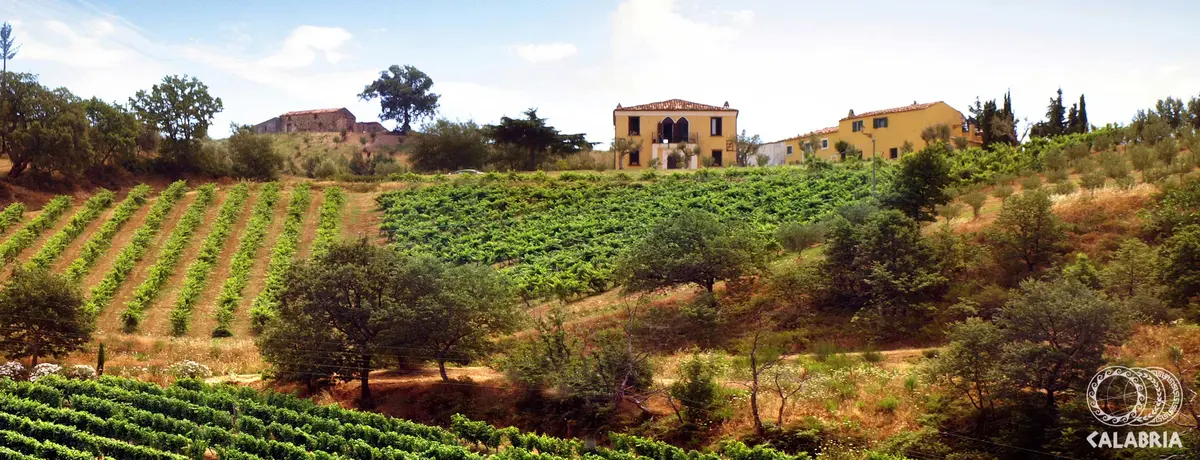Santa Sofia d'Epiro
Eastern light in Santa Sofia d'Epiro
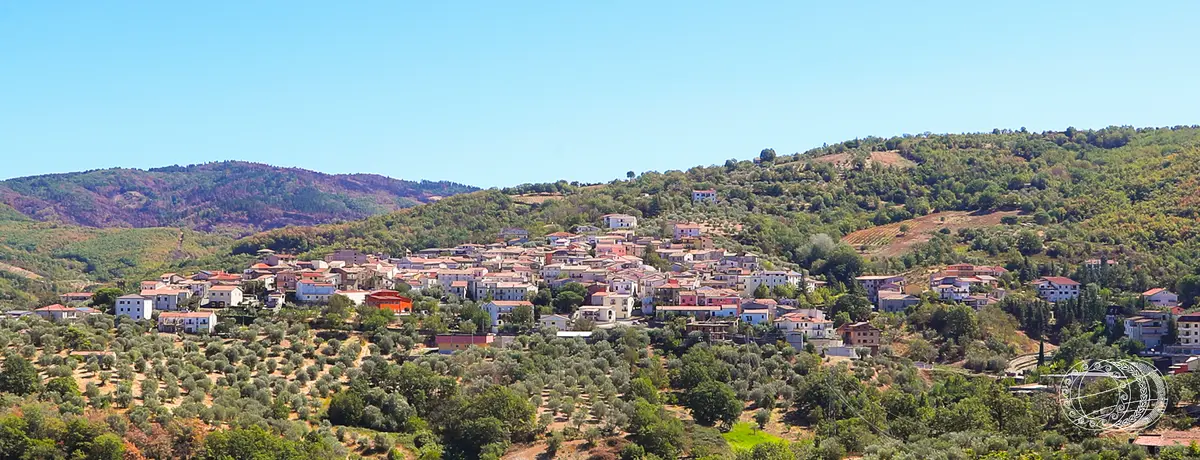
Town
Santa Sofia d'Epiro is one of the original arbëreshë (Italo-Albanian) villages in Calabria. It has preserved many elements of its traditional culture such as the ancient Albanian language, Byzantine-Greek rites, and numerous other customs, habits, and typical traditions.
Situated on the north-western slopes of the Greek region of Sila, the territory of Santa Sofia stretches out on an esplanade across the vast coastline of the Silan foothills. The slopes, amidst small hills and valleys, descend towards the banks of the river Crati and form part of the nature reserve of Lake Tarsia. This lacustrine oasis is home to many rare species of animals such as the red heron and the white stork, of which there have been numerous sightings in recent years. Visitors can make the most of this wildlife-rich area by following nature trails and birdwatching.
The reserve’s large number of mulberry trees contributes to the expansion of the silk industry and its chestnut and oak trees have merged into forests. In terms of gastronomy, olive trees and fig trees produce exquisite fruits and the area's vineyards make strong and excellent wines.
The historical centre of this village features a typical Albanian urban layout, traditionally known as a gitonia, with districts organised around a central open area.
In the 15th century, Albanian refugees arrived to repopulate the territory and strategically settled near the old church. Meanwhile, a second group camped on the eastern side where the church of Saint Venere was built. A third group settled on the upper level of the promontory, from where they also acted as lookouts. The urban space that formed the centre of the first settlement was organised into Gjitonie, a term of Greek origin meaning ‘neighbourhoods’. These consisted of groups of houses arranged radially with their entrances located on a common square known as a sheshi. Groups of gjitonie, though arranged irregularly, created an original urban plot that blended seamlessly with its surroundings.
Historic Centre
The historic town centre has a characteristic urban layout, traditionally known as gitonia, with districts organised around a central open space. Some houses are still exquisitely decorated, with stone portals bearing noble coats of arms, perhaps those of families past. In the village’s main square, you will find the Church of Saint Athanasius the Great. This church of Greek-Byzantine rite is the village’s main church and is dedicated to Saint Athanasius. It was built in 1742 in a neoclassical style with a single nave and a square apse. In the 1980s, the interior walls and vault were covered in frescoes by the Cretan painter Niko Jannakakis. At the eastern end of the village stands the ancient church of Santa Sofia which is also referred to as Qisha Vjeter. Inside you will find priceless ancient paintings and icons painted by the Jeromonahs of the Basilian abbey of Grottaferrata. On the opposite side of the village is the Church of Saint Venera which houses numerous icons by the Albanian painter, Josif Droboniku, and a seventeenth-century painting depicting the martyr. Behind the ancient Episcopal Palace in Largo Trapeza is the Town Hall and an important Museum on the Arbëreshë territory and clothing in which you can explore an accurate and complete reconstruction of the clothing worn by Albanian women. The collection includes everyday clothing as well as festive, half-holiday, wedding, and mourning dress. In one wing of the building there is a section dedicated to the Herbarium of the river Crati belonging to the Natural History Museum of Calabria which contains illustrations of all the territory’s plant species. 'The Albanians of Italy’ is a work created in 2007 by Calabrian sculptor, Aligia. The formal unity of its spherical shape evokes the transformation of history, as expressed in the extensive way in which the Italo-Albanian community were able to make use of ancient resources. This creation, made up of two concentric spheres of which the outer one is made of stone, epitomises experiences gained over time. The sculpture as a whole evokes the beauty of the inner world of the arbëreshe community.
Church of Saint Athanasius the Great
This is the village’s main church and is one of the most beautiful of the Greek-Albanian Eparchy of Lungro, to which Santa Sofia d’Epiro belongs. Dating back to 1742, this neoclassical style church stands in the centre of the village in the main square of the old town and consists of a single hall with a square apse. During the 1980s, Cretan painter Nikos Jannakakis decorated the entirety of its interior walls and vault with Byzantine-influenced frescoes.
Church of Saint Sophia the Martyr
Built in the middle of the Byzantine period, the Church of Saint Sophia the Martyr is the oldest in Santa Sofia d'Epiro and has retained some of its original features. Inside it is adorned with valuable ancient paintings and icons created by the Jeromonahs of the Basilian abbey of Grottaferrata.
The Albanian Costume Museum
The Museum of Costumes and Territory is housed in the historic palazzo overlooking Lake Trapeza. Inside you can admire an authentic and complete reconstruction of the typical trousseau of arbëreshe women. The collection includes everyday clothing as well as festive, half-holiday, wedding, and mourning clothes. The originality of the initiative lies in the historical value of the dresses which tangibly portray the dignity and prestige of the women's families, as well as the decorum of the families of the husbands who welcomed their new brides. However, even if you don't visit the museum it is still possible to admire these costumes whilst ambling through the streets of the village: many of the older ladies in the community still wear traditional clothing in their everyday lives. Numerous folklore events, among which the most well-known is the Primavera Italo-Albanese (Italian-Albanian Spring) which traditionally takes place in May, are also perfect opportunities to marvel at the traditional clothing.
Folklore
The town hosts many folklore, cultural, and religious events throughout the year, including the Greek-Byzantine rite of the solemn blessing of the waters, which takes place on 6 January. The most important festival is the feast of St. Athanasius, which is celebrated on 2 May. The festivities are called in by the flight of a small colourful paper hot-air balloon. In mid-May, the Primavera Italo-Albanese takes place which consists of a folkloristic gathering of the arbëreshe minority.
Useful information
What to know about Santa Sofia d'Epiro
Where to Sleep
There are 1 available accommodations.
Places
There are 1 places to visit.
Travel Ideas
There are 3 travel ideas.
Infopoint Santa Sofia d'Epiro
Via Largo Trapeza, 1, Santa Sofia d'Epiro
No result
